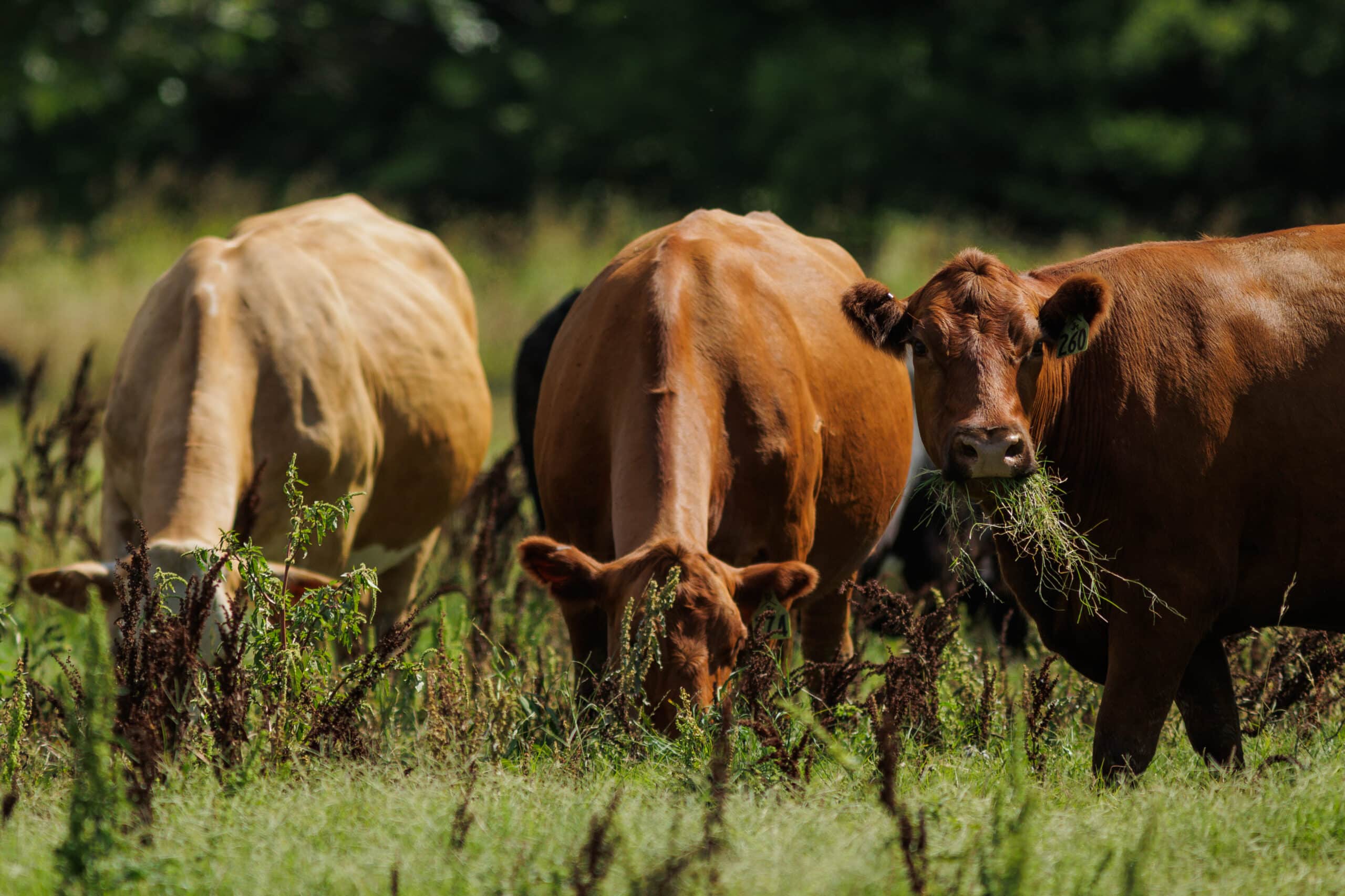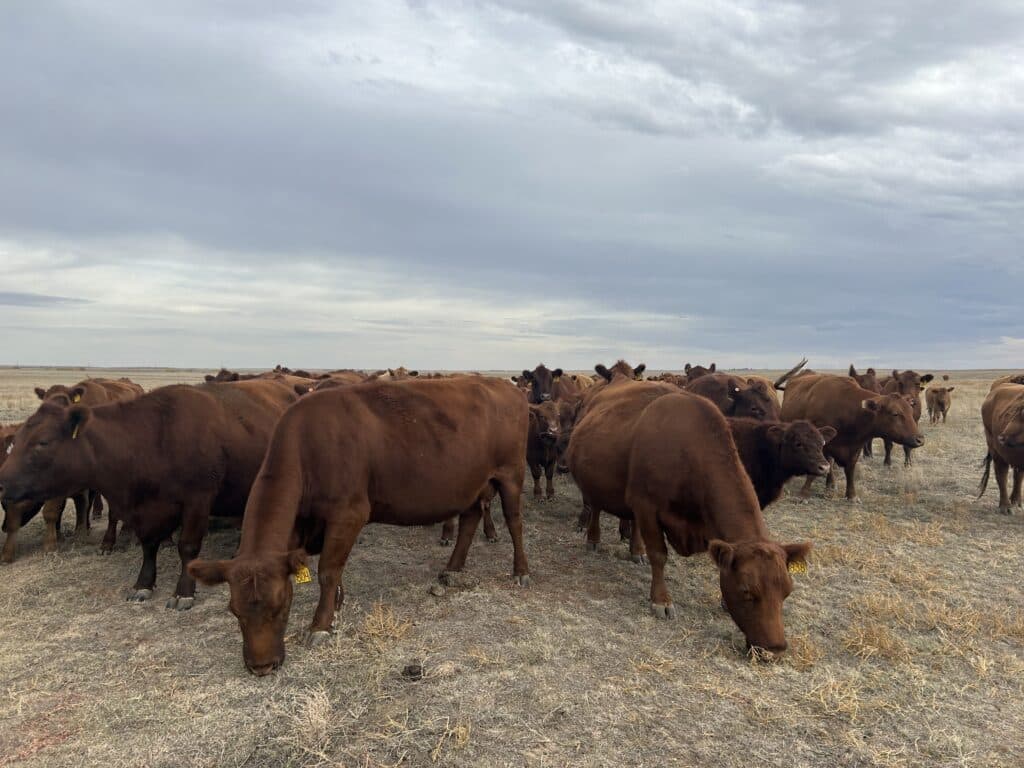Why digital records are needed for beef sustainability programs
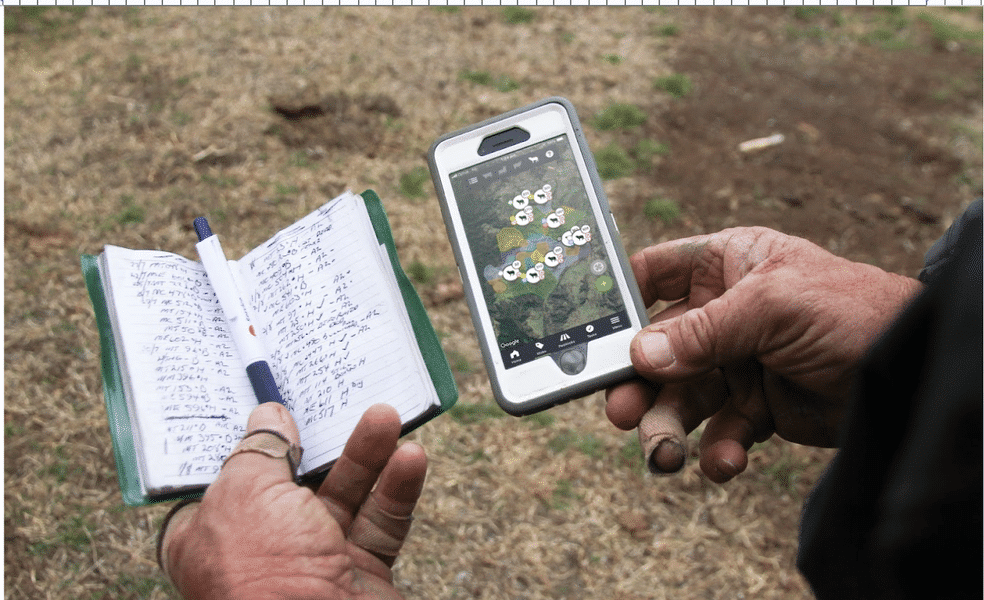
This is installment three of a four-part carbon series written by AgriWebb’s Vice President of Sustainability, Nicole Buckley Biggs, PhD.
Thanks for joining for Part 3 of our carbon series: Grazing Operations Face a Changing Carbon Industry. Did you miss the first two parts of the series? No worries! Access Part 1 (selling carbon offsets OR selling low-carbon beef) and Part 2 (big changes happening in the carbon offset market).
Now we turn to the third topic, which is at the heart of what ranchers need to do next if they’re interested in sustainability opportunities: digitizing your grazing records.
To help me address this, I’ve brought in an expert co-author who has spent the last decade focused on agriculture technology and what it can do for grazers from Australia to the UK to North America: Campbell Mauchan, AgriWebb’s VP of Partnerships.
In this article, we talk about the importance of having digital farm records if you want to join any type of carbon related project – whether offsetting, insetting, certification, or research focused. We cover what farm records these programs require; how to make it easier to collect and share your records while also maintaining data privacy; and simple things you can do once you digitize that can improve the financial health of your operation, even without carbon project payments.
The vast majority of grazing operations either don’t keep good records, or keep records in a pocket-sized, hand-written notebook – which as we’ve heard time and time again, typically ends up in the washing machine. While that notebook is handy, it unfortunately falls short in two areas: 1) it doesn’t provide any insight into the progress you’re making and 2) it’s not easy to share information written down in a notebook.
That’s why it’s important to digitize your ranch records.
Any sustainability-related project will require some information (or “data”) from you, to provide transparency in reporting. That required information includes things like stocking rates, how long a pasture was rested, and, in many cases, other details like fertilizer application, feeding, manure application, and tilling. This information can be key to calculating your operation’s carbon footprint.
In the past, producers have needed to give carbon project developers binders and notebooks to sort through, or have had to complete long, tedious survey forms to provide the right info to meet program requirements. Or maybe, they shared Excel spreadsheets as an email attachment. All of these approaches have one thing in common: they are a total pain for both the producer and the carbon project developer. The last thing any farmer or rancher wants to do is spend evenings or weekends pulling together records for yet another program.
Whether you’re going to sign a carbon offset contract or are looking to lower the carbon footprint of the meat you produce, the first to-do on your checklist should be to create a clean, straightforward process for capturing digital records.
Step 1: Pick the right digital record keeping tool
There are multiple options on the market that help with digitizing records. That’s why it’s important to first evaluate the needs of your own operation to see what kind of tool is best for your business. Are you looking to track animals individually, or as a herd? What goals drive your business? Are you focused on genetics, grazing, feed management or other practices to push your business forward? Would it be helpful for multiple employees to have access to the tool and have assigned tasks? Or do you just want to know where your cows are? And, of course, what kinds of records do you already need to share with programs or certifications you participate in?
When selecting a tool to help digitize your operation’s records, you should also remember to consider the functionality and the cost. By cost, we mean the dollars paid to access the software, as well as the potential cost of losing ownership of your data. We would always recommend asking a software provider directly to ensure that you, the producer, own your data once it’s entered into the tool. Remember, if you’re not paying for the product, you might be the product!
Step 2: Know the value of your digital records when it comes to carbon projects
Once you’ve digitized your farm or ranch records, congratulations! You now hold a valuable data set. For instance, companies with corporate climate commitments—which will be most of the major food companies over the next 5-10 years—will need farm-level data to calculate their current carbon footprint (called their “baseline”). They’ll also need to track progress over time, so your data will continue to hold value. Figure 1 highlights examples of the kinds of farm-level data these companies will need for their sustainability reporting, mostly through WWF’s Science Based Targets Initiative which sets standards for corporate climate action globally.
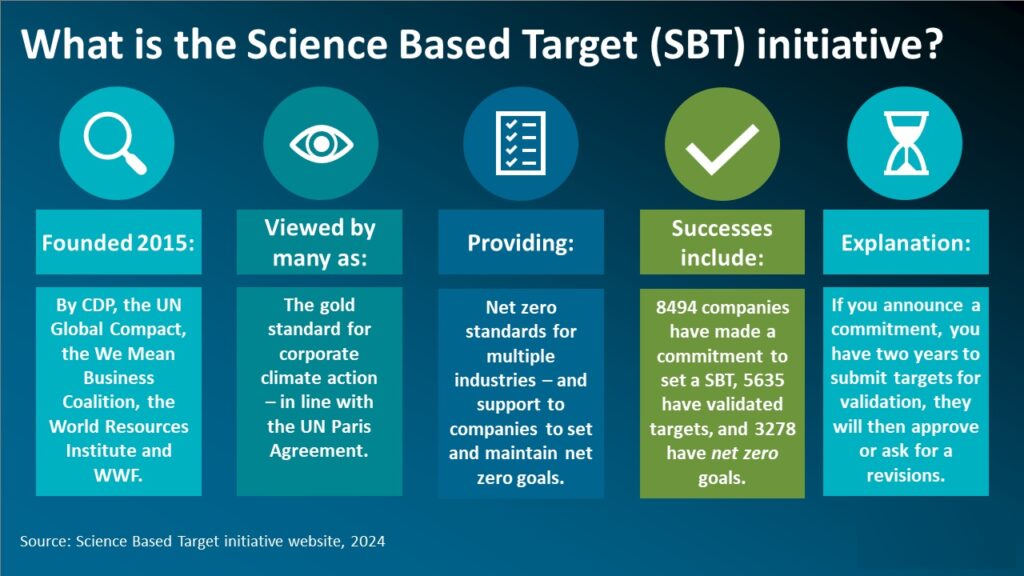
Besides enabling you to easily participate in carbon projects and get paid for your high-value data, digitized ranch records have additional benefits.
For example, if you have a digital ranch map showing where your cattle are, think about the other opportunities you can unlock. You can improve both your livestock and pasture management in one place. You can also easily overlay visual displays of your forage availability estimated using satellite imagery. This is just one of many tools that you can opt into through AgriWebb if you’re interested in preventing overgrazing, or want to reduce hay costs by improving grazing of the grass you already have.
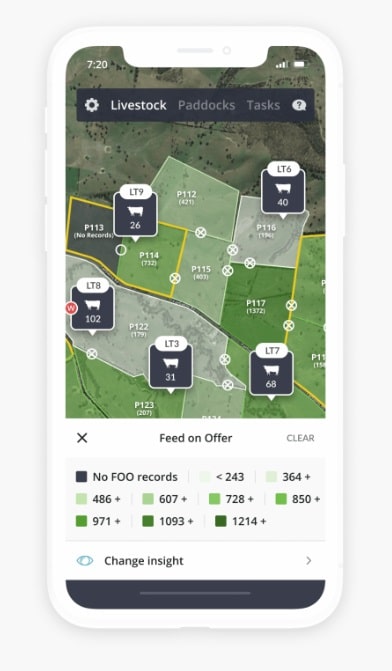
Step 3: Unlock the power of secure data sharing
With your digitized grazing and livestock records now in hand, it is also much easier to share those records with project developers or sustainability groups. With one click, you can communicate important data to key stakeholders like farm advisors and financial lenders, who in some cases may even be able to provide improved loan rates and services in return for specific types of data.
Now, you’ll spend much less time re-entering data through multiple systems. And, you’ll always have the best possible data on-hand to help you make critical decisions to move your grazing operation forward.
Modern software platforms should have built-in data privacy and security features, which help you ensure control over your data, including selecting the specific data points you want to share with any given program. At AgriWebb, our 40-person product and engineering team is working hard to build out our API’s so that carbon-focused groups can easily request your permission and then pull data directly from AgriWebb without requiring emails, phone calls, and surveys.
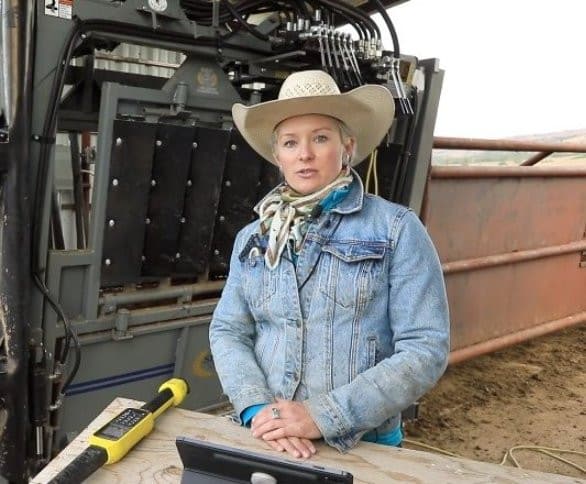
Step 4: Use your digital records to make “climate-smart” practices work for you
High-quality digital grazing records are also the foundation for testing what climate practices actually make sense for your operation. There are a lot of choices around what to try when it comes to carbon. Rotational grazing? Cover crops? Pasture seeding? Improving animal health or genetics?
The fact is, most producers aren’t really interested in data. What matters are data insights. When you manage your records digitally, you can begin to clearly visualize trends and insights that will help you understand how your business decisions—including any new climate-focused practices you’ve implemented—are impacting your productivity and profitability.
If one of your “climate-smart” practices isn’t helping your profitability and productivity over time, you ought to know that so you can shift to other practices that DO support those goals.
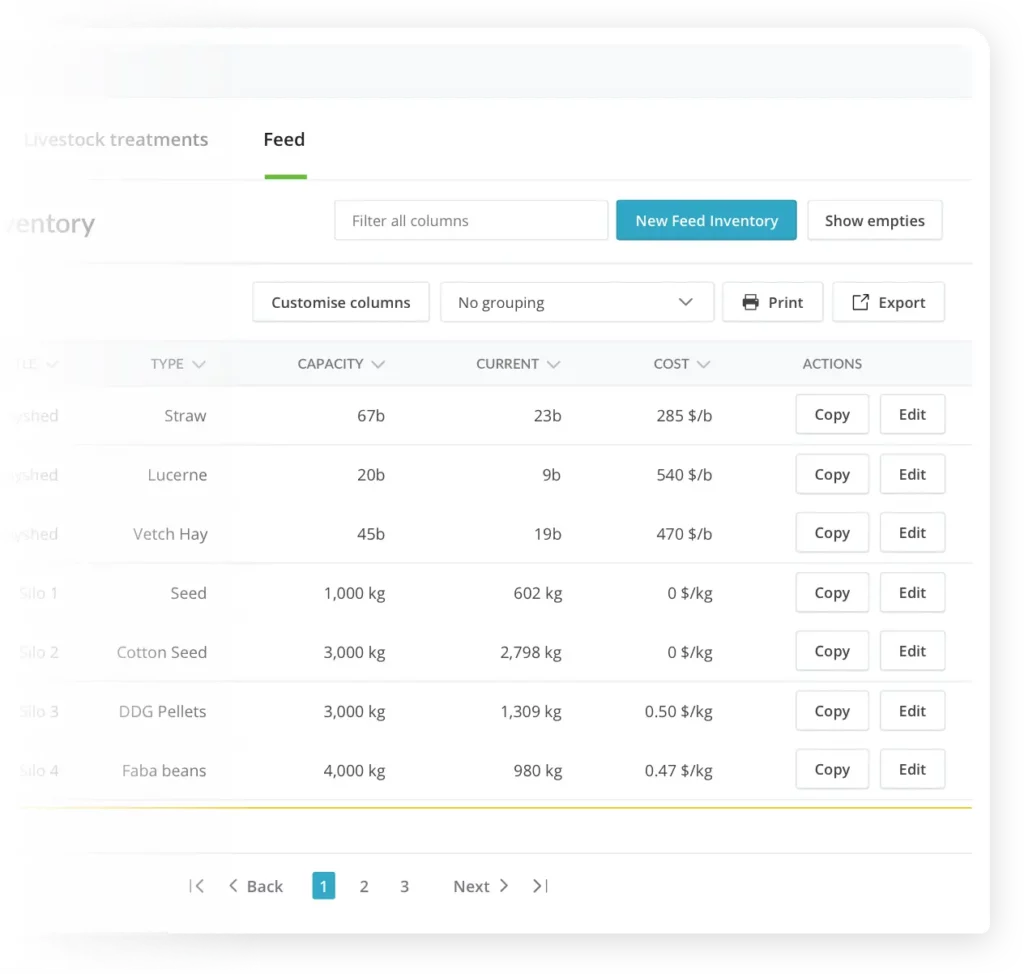
Step 4: Take carbon projects one step at a time
As mentioned in the first post of this series, the majority of operations surveyed in our 2023 Global State of the Farmer Report are waiting to see how carbon markets develop before jumping in. With the carbon industry changing so rapidly, taking the time to explore exactly which opportunities best fit your operation is time well spent.
In the meantime, while changes in global carbon markets continue to play out, producers can still work toward their goals. They can get their grazing records in good shape and digitized, start to test which climate-smart practices work best for their operations, and document those changes so that they can be easily shared with sustainability-related payment programs in the future. If AgriWebb is the software you choose, we’d love to partner with you on that journey.
Thanks for tuning in! And huge thanks to my co-author Campbell Mauchan for jumping in with his insights here.
Next week is the 4th and final post of this series, talking about a question that comes up a lot: how much carbon can I realistically sequester if I change grazing practices? I’ll dig into what is known today, where there are still holes in the science, and what producers can focus on in the meantime.
